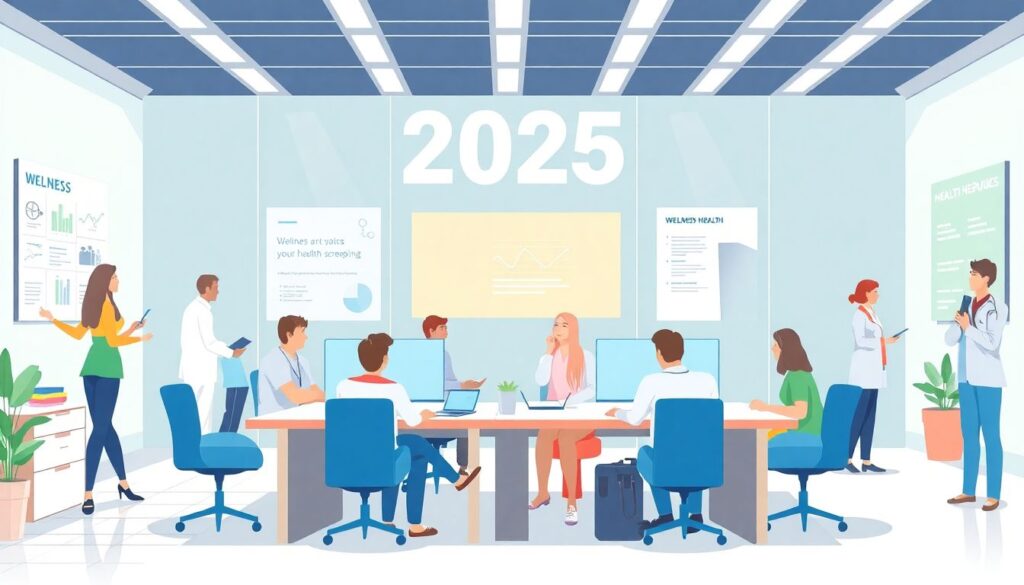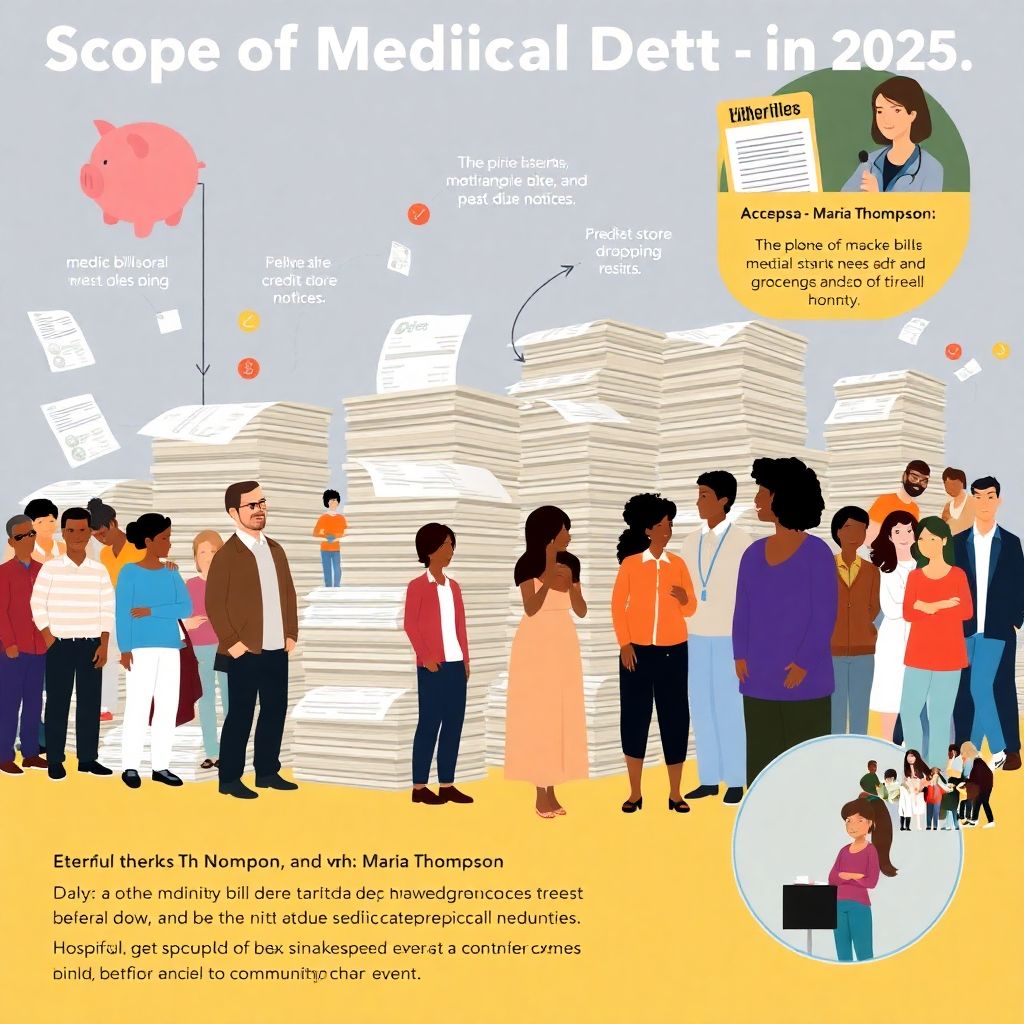Understanding the Scope of Medical Debt in 2025
Why Medical Debt Remains a Pressing Issue
As of 2025, medical debt continues to be one of the leading causes of financial distress for millions of individuals. Despite advancements in healthcare technology and policy reforms, out-of-pocket costs remain high due to insurance gaps, high deductibles, and rising treatment expenses. According to the Consumer Financial Protection Bureau, over 40% of American adults have some form of medical debt, and many are forced to choose between paying for essential healthcare or meeting basic living expenses. This financial tug-of-war often leads to damaged credit scores, mental stress, and delayed treatment.
Inspiring Journeys of Overcoming Medical Debt
Take the story of Maria Thompson, a single mother from Texas who faced $65,000 in medical bills after a complicated surgery. Instead of filing for bankruptcy, Maria sought out financial counseling, negotiated her bills down by 40%, and enrolled in a hospital charity program. Today, she shares her journey through webinars and local community events, helping others navigate similar struggles. Her story exemplifies resilience and the power of information—two essential tools in overcoming medical debt without sacrificing financial wellbeing.
Strategies to Handle Medical Debt Responsibly
Step 1: Verify and Negotiate Your Bills
The first step in managing medical debt is accuracy. Request an itemized bill and cross-check it for duplicate charges, insurance errors, or services you didn’t receive. Many hospitals and clinics overbill unintentionally. Once verified, don’t hesitate to negotiate. Speak directly to the billing department or a hospital financial advisor. Many providers are willing to reduce the final amount or offer zero-interest payment plans if you demonstrate financial hardship.
Step 2: Explore Financial Assistance Programs
In 2025, there are more nonprofit and hospital-based financial aid programs than ever before. Organizations like RIP Medical Debt and HealthWell Foundation continue to expand their reach, helping eligible patients eliminate or significantly reduce their balances. Additionally, most nonprofit hospitals are legally required to offer charity care. Even if you’re not eligible for Medicaid, partial relief is often available if you apply within 240 days of receiving your bill.
Building Long-Term Financial Resilience
Develop Smart Budgeting Habits
Managing medical debt is only the beginning. Building a sustainable financial future requires disciplined budgeting. Allocate a portion of your monthly income to an emergency health fund—even $25 per month can create a buffer over time. Use budgeting apps like YNAB (You Need a Budget) or Mint to track medical expenses separately, allowing for clearer insight and better planning. Also, review your health insurance annually to ensure it aligns with your current needs and risks.
Invest in Preventive Health Measures

Reducing future medical costs starts with proactive health management. Regular screenings, fitness routines, and mental health care can prevent costly medical emergencies. Employers in 2025 are increasingly offering wellness incentives through workplace programs—take advantage of these benefits. Remember, prevention is not only healthier but far more affordable than treatment.
Case Studies of Innovative Debt Relief Solutions
Community Health Coalitions Making an Impact
Several cities have launched pilot programs to combat medical debt through collective action. In Chicago, the “Healthy Finances Coalition” negotiated with hospitals to purchase and forgive over $12 million in unpaid bills for low-income residents. Funded by a mix of private donors and municipal grants, this initiative showcases the potential of community-driven solutions. Such models are now being replicated in Portland, Detroit, and Atlanta with measurable success.
Tech Startups Disrupting the Medical Billing Industry
Startups like Resolve and Goodbill are revolutionizing the way patients manage medical expenses by offering AI-driven negotiation services. These platforms analyze your bills, compare them with regional averages, and contact providers on your behalf. By 2025, many of these tools are integrated with personal finance apps, making debt resolution more accessible and less intimidating for users across income levels.
Resources to Empower and Educate
Where to Learn and Get Support
Knowledge is your most valuable asset when facing medical debt. The National Consumer Law Center offers free guides on patient rights and debt negotiation. Websites like NerdWallet and Debt.org provide up-to-date content on managing healthcare expenses. For personalized help, nonprofit credit counseling services like GreenPath and Money Management International offer free or low-cost consultations. Don’t overlook local community health centers—they often have social workers trained in financial assistance navigation.
Online Courses and Webinars

In 2025, digital education has made it easier than ever to gain financial literacy. Platforms like Coursera and EdX now offer specialized courses on managing health-related expenses. Look for titles such as “Financial Health in the Age of High Medical Costs” or “Understanding Your Medical Bills.” Many are free and led by professionals in healthcare finance and law, equipping you with actionable tools to protect your assets.
The Future of Medical Debt: A Look Ahead
Policy Shifts on the Horizon
The landscape of medical debt is likely to evolve significantly over the next five years. With bipartisan support growing for healthcare affordability, experts predict stronger regulations around transparent billing and caps on out-of-pocket costs. States like California and New York are already piloting universal healthcare models that could reduce individual financial burdens. Furthermore, the increasing use of blockchain in health records may streamline insurance claims and reduce billing errors.
Empowerment Through Collective Action
Ultimately, navigating medical debt in 2025 is no longer a solitary battle. Grassroots movements, tech innovation, and educational access are shifting power back to patients. By staying informed, leveraging resources, and sharing your story, you contribute to a culture where financial ruin is no longer a side effect of getting sick. The tools are here. The support exists. Now is the time to take control of your financial health—one step, one strategy at a time.

